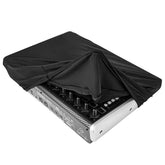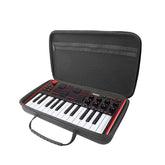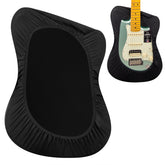Unlocking Sight-Reading Skills: Strategies for Musicians
by
linzz
20 Feb 2024
Sight-reading proficiency serves as a major threshold in learning music, largely distinguishing between amateur and professional musicians. While we may not aspire to become performers, it doesn't mean that we don't need to practice sight-reading. But why can some "pros" read music so quickly?
In reality, those who read music quickly don't necessarily have faster reactions; rather, they've trained to remember common patterns and logic in music notation, enabling them to anticipate the upcoming notes even without looking at the score.
We can understand music as a "language." Like all other languages, music has its own alphabet, words, phrases, and grammar.

Proficient individuals are essentially native speakers of music. They've seen and used common patterns and logic in music notation countless times and incorporate them daily. Therefore, they only need a glance to understand what a whole section is about without having to scrutinize it.
For beginners, low sight-reading ability isn't due to poor vision or naturally slow reactions but rather insufficient familiarity with the vocabulary and grammar of music. Thus, they can't immediately retrieve and utilize what they've understood long ago from their brains.
So, how can beginners improve their sight-reading skills?

1. Look ahead, play later
After playing a note accurately, immediately shift your eyes to the next note. When practicing with rhythm, lightly tap your foot to keep the beat, memorizing the duration of the played notes instead of staring at them. This way, a smooth melody can be produced.
2. Look at the music more, look at your hands less
Due to unfamiliarity with the keyboard, students often focus on their hands rather than the music. The correct approach is to look more at the music, less at your hands, or even not at your hands at all, ultimately cultivating the habit of sight-reading.

3. Prefer slow over interrupted
Nervousness or other factors may cause sight-reading at a faster pace, affecting accuracy and coherence. Start by tapping the basic beat, indicating slow sight-reading. Only by slowing down can you carefully read the music, give your brain time to react, listen to the notes, find hand positions, and ensure correct fingerings and techniques.
In reality, those who read music quickly don't necessarily have faster reactions; rather, they've trained to remember common patterns and logic in music notation, enabling them to anticipate the upcoming notes even without looking at the score.
We can understand music as a "language." Like all other languages, music has its own alphabet, words, phrases, and grammar.

Proficient individuals are essentially native speakers of music. They've seen and used common patterns and logic in music notation countless times and incorporate them daily. Therefore, they only need a glance to understand what a whole section is about without having to scrutinize it.
For beginners, low sight-reading ability isn't due to poor vision or naturally slow reactions but rather insufficient familiarity with the vocabulary and grammar of music. Thus, they can't immediately retrieve and utilize what they've understood long ago from their brains.
So, how can beginners improve their sight-reading skills?

1. Look ahead, play later
After playing a note accurately, immediately shift your eyes to the next note. When practicing with rhythm, lightly tap your foot to keep the beat, memorizing the duration of the played notes instead of staring at them. This way, a smooth melody can be produced.
2. Look at the music more, look at your hands less
Due to unfamiliarity with the keyboard, students often focus on their hands rather than the music. The correct approach is to look more at the music, less at your hands, or even not at your hands at all, ultimately cultivating the habit of sight-reading.

3. Prefer slow over interrupted
Nervousness or other factors may cause sight-reading at a faster pace, affecting accuracy and coherence. Start by tapping the basic beat, indicating slow sight-reading. Only by slowing down can you carefully read the music, give your brain time to react, listen to the notes, find hand positions, and ensure correct fingerings and techniques.






